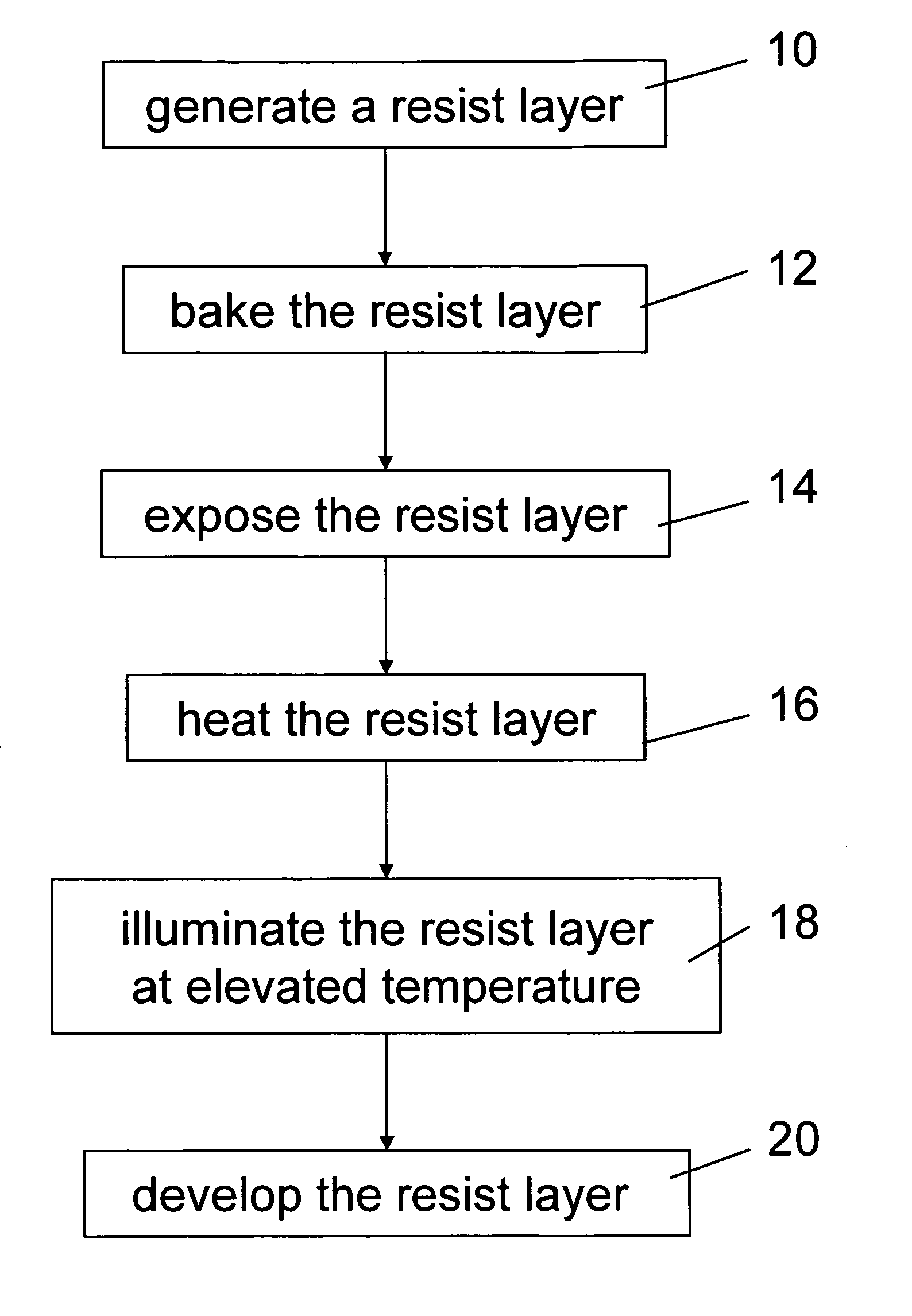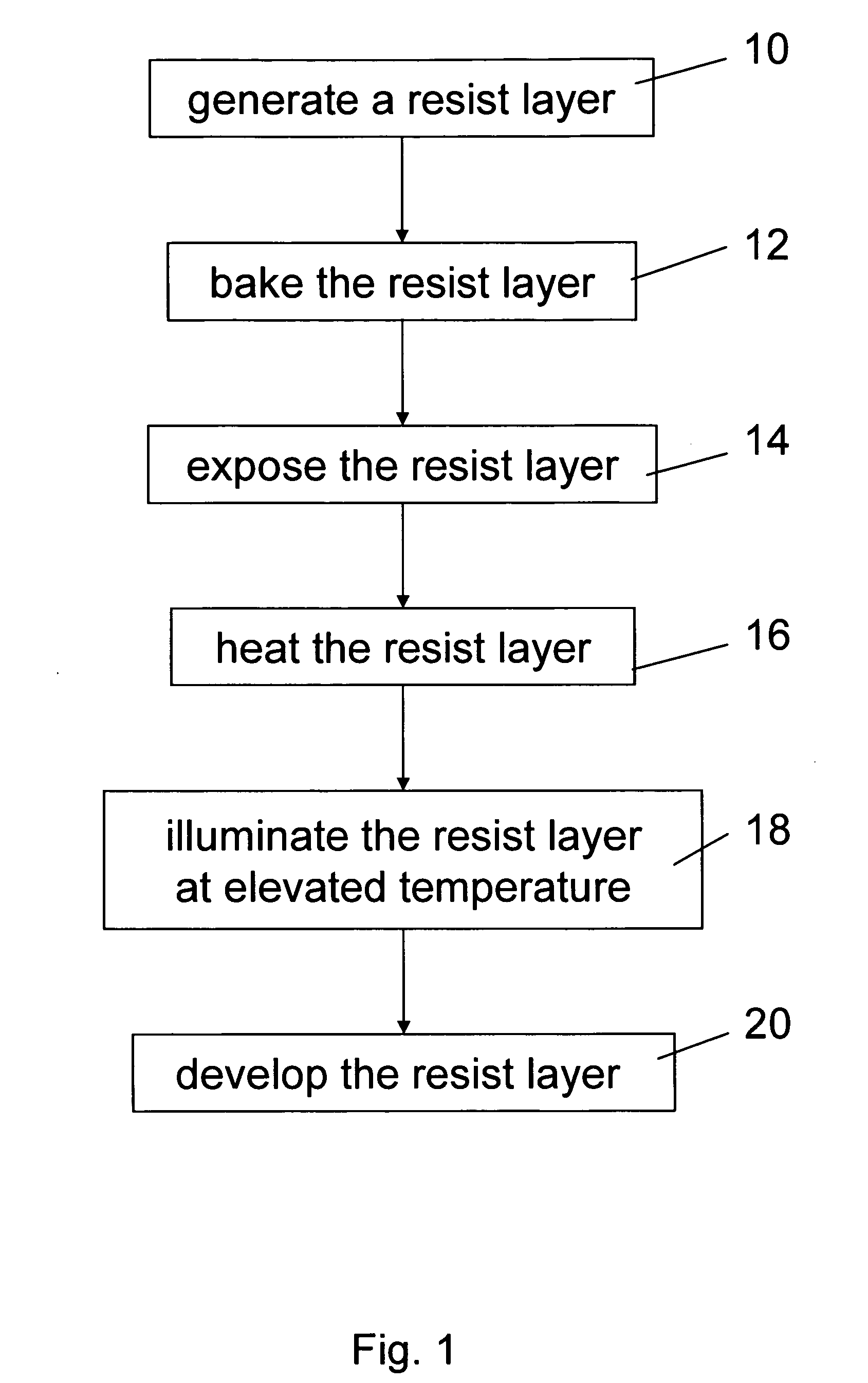Method and apparatus for a post exposure bake of a resist
a resist and post-exposure technology, applied in the field of post-exposure bake of resists, can solve the problems of blurred image caused by diffusion, low activation energy resists, and inability to be neglected, so as to reduce blur
- Summary
- Abstract
- Description
- Claims
- Application Information
AI Technical Summary
Benefits of technology
Problems solved by technology
Method used
Image
Examples
Embodiment Construction
[0027]FIG. 1 is a flow diagram of a method for patterning a chemically amplified resist layer according to the present invention. In a first step 10, a resist layer is generated on a substrate. The surface of the substrate is coated with a liquid solution of the resist material in a solvent. Preferably, a spin coater is used to produce a thin layer with laterally homogeneous thickness.
[0028] An example of the resist is a high activation energy resist, a mixture of 6.0 g terpolymer (22.5 mol-% tertbutylmethacrylat, 50 mol-% maleicanydride, 22.5 mol-% allylsilane, 5 mol-% ethoxyethylmethacrylat), 0.35 g triphenylsulfonium-hexafluorpropansulfonat (photoacid precursor) and 0.05 g trioctylamin (basic additive) in 93.6 g 1-methoxy-2-propylacetat (solvent). As a preferred example, the liquid solution of the resist in the solvent is coated on the substrate at 2000 rpm in 20 s.
[0029] In a second step 12, the resist layer is heated to an elevated temperature. The solvent evaporates and the ...
PUM
 Login to View More
Login to View More Abstract
Description
Claims
Application Information
 Login to View More
Login to View More - R&D
- Intellectual Property
- Life Sciences
- Materials
- Tech Scout
- Unparalleled Data Quality
- Higher Quality Content
- 60% Fewer Hallucinations
Browse by: Latest US Patents, China's latest patents, Technical Efficacy Thesaurus, Application Domain, Technology Topic, Popular Technical Reports.
© 2025 PatSnap. All rights reserved.Legal|Privacy policy|Modern Slavery Act Transparency Statement|Sitemap|About US| Contact US: help@patsnap.com



